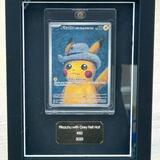Yes we can offer specialist acrylic, made for the most discerning collector.
This acrylic makes you second guess if there's anything in front of your media at all, it's that clear.
Cheevo "Invisible" acrylic takes display clarity to another level. Unlike standard glazing, its anti-reflective coating virtually eliminates glare letting your game art, steelbooks, or collectibles shine through without distortion. Combined with 99% UV protection, it keeps colours true and prevents fading over time.
The result? Crystal-clear viewing from every angle, museum-grade protection, and a finish so clean it’s almost invisible. It’s the ultimate choice for collectors who want to see their memories, not their reflections.
Contact Cheevo today to explore our range.





